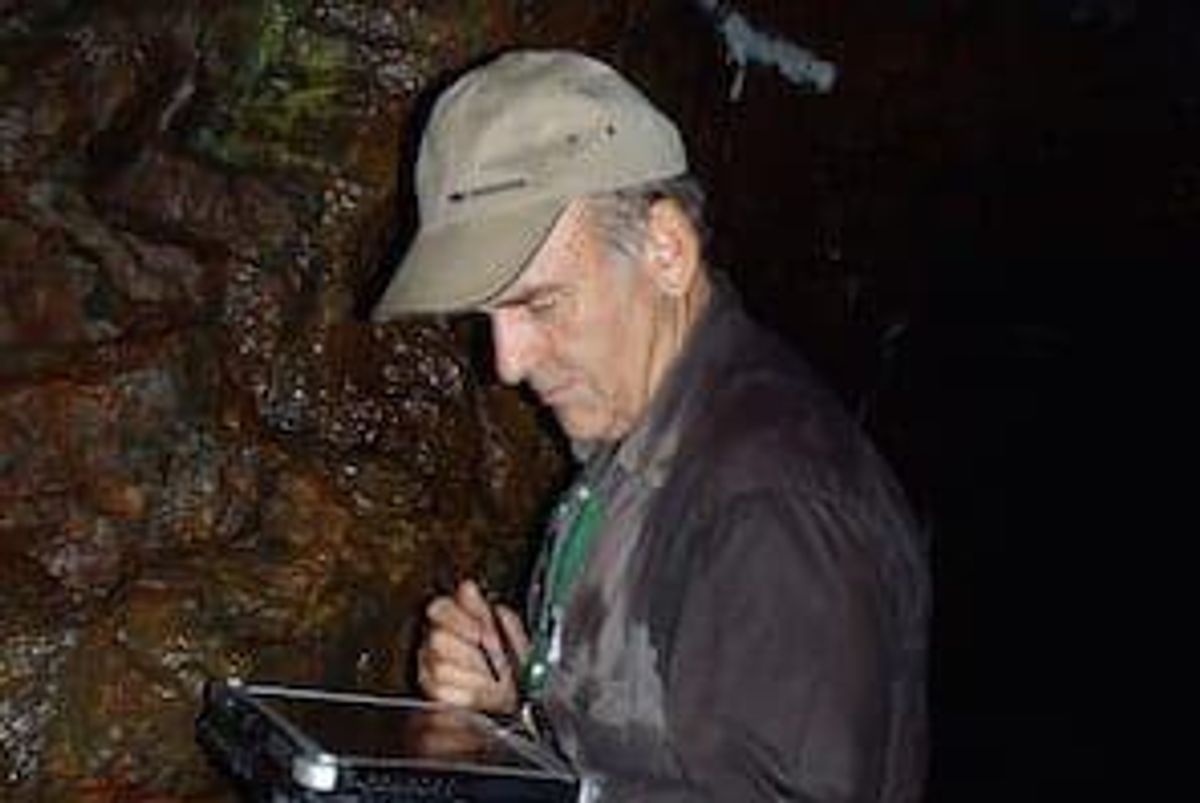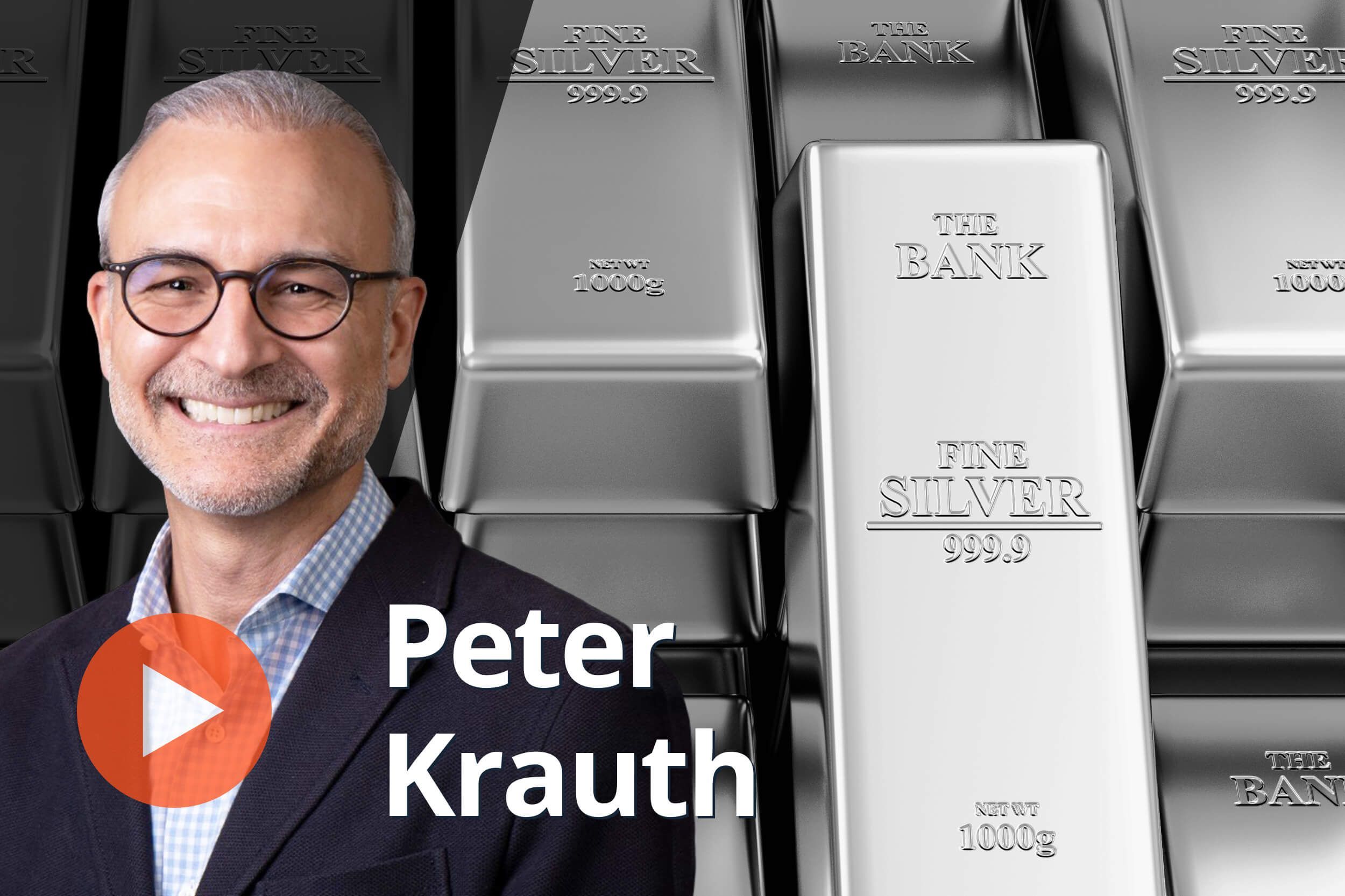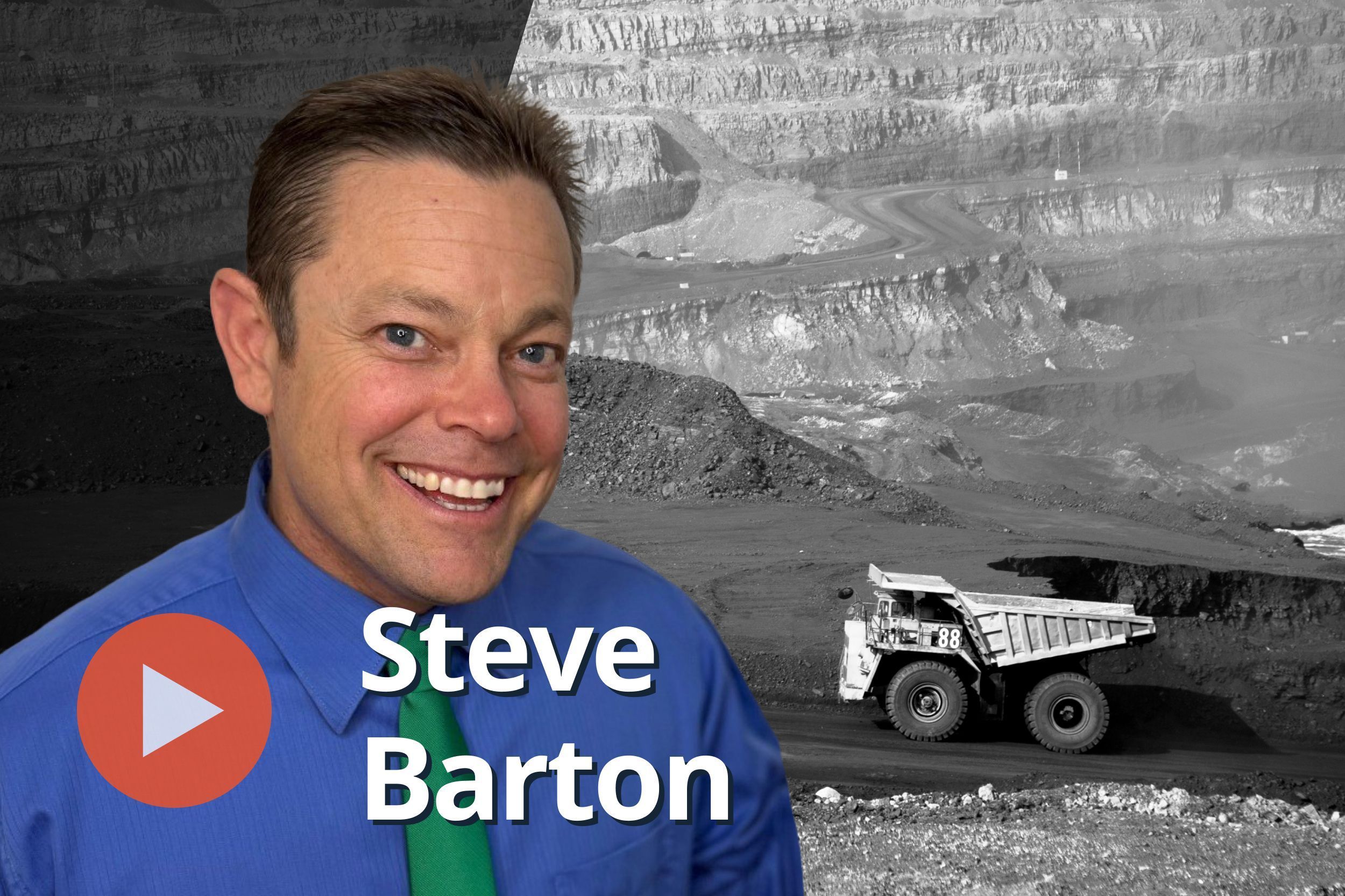
Newrange Gold CEO Robert Carrington
Newrange Gold CEO Robert Carrington discusses impressive results from the company’s Phase 1 drill program at its Nevada-based Pamlico property.
Newrange Gold (TSXV:NRG) is a Canadian exploration and development company with precious metals and polymetallic properties in Nevada and Colombia.
CEO Robert Carrington believes the high-grade, near-surface oxide gold mineralization at the Pamlico property offers an exceptional opportunity for Newrange Gold and its shareholders.
Newrange Gold began drilling at Pamlico in May 2017 to test and expand recently discovered high-grade and disseminated gold mineralization sampled in the Merritt zone; it is exploring up- and down-dip extensions and along strike as well. The drill program is part of a fully funded exploration program at Pamlico that will extend through the year, and includes trenching, mapping, geochemical sampling, geophysical surveys and metallurgical work.
Newrange Gold recently released assay results from 19 holes, including 244.3 g/t gold over 0.8 meters within 4.6 meters averaging 43.8 g/t gold; the intercept is within 13 meters of the surface.
Below is a transcript of our interview with Newrange Gold CEO Robert Carrington. It has been edited for clarity and brevity.
Investing News Network: Please give our investor audience an overview of Newrange Gold and the Pamlico project.
Newrange Gold CEO Robert Carrington: Newrange Gold started as Colombian Mines in 2006 when we finished an IPO in 2008. The company had been focused on exploration projects in Colombia until 2016, when we acquired the Pamlico project in Western Nevada. Pamlico is a very high-grade, volcanic-hosted property that historically was one of the highest-grade districts in the state.
The Pamlico District sits at the junction of the Walker Lane and Pancake Range lineaments, two of the largest structural lineaments in the state of Nevada. A number of major mines occur within both of these lineaments. Within Walker Lane, there’s the Comstock Lode with 8.5 million ounces of gold and about 400 million ounces of silver. The Tonopah and Goldfield districts, and numerous other high-grade districts, are also found along the Walker Lane. The largest mine along the Pancake Range lineament is the giant Round Mountain mine, where current reserves plus past production total 22 million ounces. Kinross Gold (TSX:K,NYSE:KGC) is currently operating Round Mountain.
INN: Your recently released drill results show that the Phase 1 drill program at Pamlico is going exceptionally well. Please share with us some highlights from the program and what it means for the project going forward.
RC: The Phase 1 drill program went better than I certainly could have hoped. We have drilled intercepts in multiple holes with very high-grade gold. Hole number 10 had 1.5 meters of 341 grams gold. Hole number eight had 1.5 meters of 240 grams gold. Both of those were within much larger intercepts of plus 40 grams gold. An important aspect of Pamlico is turning out to be the disseminated mineralization. Our hole number 18 was drilled perpendicular to the decline. If your subscribers look at the historic press releases, we have 70 meters of 3 grams gold in the decline, and then hole number 18 intersected 70 meters of 3 grams gold perpendicular to that. So we’re seeing a cohesive disseminated system cut by these extremely high-grade veins.
INN: You’ve also staked an additional 111 new claims in the area, increasing the size of the Pamlico project by 75 percent. Please tell us about these new claims and the value they add to the property as a whole.
RC: The two principal reasons we staked these additional claims were to cover an area of carbonate platform sediments where we see up to 3 grams gold going north from the property in addition to the other claims we staked just after we acquired the property in July of 2016. There’s several miles of altered mineralized sediments that contain highly anomalous gold values with potential for a sediment-hosted gold system. The other principal reason for staking these claims is to give us an operational buffer and room to grow over the years. It adds substantial future exploration potential to the project.
INN: How does Pamlico benefit from its Nevada location in terms of infrastructure and permitting?
RC: Nevada has always ranked as one of the top 10 jurisdictions in the world for mining, as rated by the Fraser Institute. Nevada has outstanding infrastructure, the permitting is transparent and the state is very pro-mining. Pamlico itself has unparalleled infrastructure. We’re 20 minutes from the town of Hawthorne. We have paved, government-maintained access almost to the property with government-maintained gravel roads on to the property. Literally it’s a 20-minute drive from town. If you forget a wrench, you can go back and get it as opposed to other projects where it’s a two-day venture to get something. There’s a 234-KVA power line that crosses the property.
The operating climate in Nevada of course is extremely good for mining. It tends to be a dry mild climate so that we don’t have issues with precipitation impacting mining. All in all, it’s just is one of the best jurisdictions in the world in which to operate.
INN: What catalysts are on the horizon for Pamlico and Newrange Gold in the second half of 2017?
RC: We have a lot of work ongoing with geologists on site, mapping and sampling as we speak. We’re also going to be initiating a program of underground mapping and sampling of more than 2 miles of historic mine workings from the 1800s. Within the next couple of weeks, we’ll be initiating airborne geophysics covering the property and we’re going to be initiating a program of geochemistry across the property as well as a gravity survey. The gravity will be very useful in identifying alteration within the carbonate rocks that may be permissive to a sediment-hosted gold system. All of this will lead into a drill program scheduled to start in August.
INN: Please tell us about the sample you brought from Pamlico today.
RC: This is a sample of some of the historic high-grade mineralization from the property. This comes from an area on Pamlico Ridge about half a mile from where we’re currently drilling. These are extremely high-grade veins that were exploited back in the 1800s. Unlike this particular specimen, the mineralization we’re drilling tends to be much finer grained. In intercepts where we have 340 grams gold per tonne, we don’t see any visible gold. The gold in the andesites tends to be very fine, and should be amenable to modern mining and milling technology.
CEO interviews are part of investor education campaigns for clients advertising on the Investing News Network. Important news is contextualized by CEOs, and the resulting interviews are disseminated to the Investing News Network audience because they have value to market watchers.
The Investing News Network interviews a CEO for an understanding of their perspective on the company, the investment potential of the company and market news related to the company. The information contained here is for information purposes only and is not to be construed as an offer or solicitation for the sale or purchase of securities.
The interview below was originally posted on May 16, 2017. Please scroll up for the latest Newrange Gold interview.
Newrange Gold (TSXV:NRG), formerly Colombian Mines, is a Canadian mineral exploration and development company with precious metals and poly-metallic properties in Nevada and Colombia. Below is the transcript of our conversation with Newrange Gold CEO Robert Carrington.
Newrange Gold will commence drilling in May 2017 at its Pamlico Gold Project located in one of Nevada’s highest grade gold districts. Recently announced systematic sampling of the Merritt decline by Newrange Gold identified multiple high grade structures assaying from 28.90 grams per ton gold over 1.5 meters to 104.75 grams per ton gold over 1.5 meters within an extensive zone of disseminated mineralization averaging 2.92 grams per ton gold over 75.5 meters in the decline.
Newrange Gold recently completed a series of financings with proceeds totaling over $1.5 million, placing the company in an excellent position to aggressively explore and develop the near-term production opportunity at Pamlico.
Investing News Network: What is behind the name change from Colombian Mines to Newrange Gold?
Newrange Gold CEO Robert Carrington: We have diversified out of Colombia and the name change more accurately reflects our increased presence in favorable jurisdictions such as Nevada.
INN: What are the near-term opportunities for small-scale production at Pamlico?
RC: Pamlico is an historically producing property which has some 300 separate mine workings across at least 100 individual veins which were mostly developed during the late 1800s. From about 1900 Pamlico had been privately held until we acquired the property in 2016 from the Merritt family following the untimely demise of the family’s patriarch.
Pamlico has very near-term small-scale production opportunities, which is rare in Nevada. The family we bought the property from had identified an extremely high-grade multi-ounce chute that they had drilled off and started developing. Although the property largely remains under-explored by modern methods, modern mining infrastructure is in place.
The near-term production potential at Pamlico exists in shallow, high grade intersections such as the Merritt Zone including extensions along strike and up and down dip. Results from drilling by the Merritt family clearly demonstrate the near-term production potential at Pamlico.
INN: Please tell us about the grades and known mineralization.
RC: Historically, Pamlico had been one of Nevada’s highest grade districts. In the 1880s there were documented shipments from the Pamlico district assaying over 7,000 grams per ton. They were shipping that ore to custom mills in the nearby Goldfield district. More recently, drilling by the Merritt family has encountered drill intercepts up to 22 ounces over a 1.5 meter intervals and other much larger intervals with multi-ounce mineralization. This can all be seen on our website at www.newrangegold.com.
INN: Going forward, what are your plans for the property?
RC: At Pamlico, the plans are to drill the immediate area of the decline and that drilling is expected to start in mid-May. On the rest of the property we will fly airborne magnetometry and radiometrics, very high resolution geophysical surveys. We are going to be doing very extensive underground and surface mapping on the property in addition to a lot of surface geochemical and rock sampling. There are historic samples on the southern part of the property outside of any of the current drill targets where there are outcrops assaying over 200 ounces per ton.
INN: What is the status of the properties in your Colombian portfolio?
RC: The Colombian properties are on care and maintenance. As some of your readers may know, we sold Anori to a private mining company last year. That company has notified us they plan to exercise that option. Depending on how they exercise the option, we will receive between $300K and $800K and that’s on top of the $1.8 million we currently have in the treasury.
The other two projects in Colombia are Yarumalito which is a large gold-porphyry system, and El Dovio which is a gold dominate polymetallic system. Yarumalito has seen over 18,000 meters of drilling and we are having a consultant look at the database to see if he agrees with my assessment that we have enough drilling to come up with a NI 43-101 compliant resource estimate. We hope to complete that by year-end. At El Dovio we are going to expand our environmental permitting which will allow us to conduct additional drilling later this year. Currently we have about 5,000 meters of drilling at El Dovio that traces the mineralization for about 200 meters down dip and along about 300 meters of strike length.
INN: What are the next catalysts for Newrange Gold that investors should be on the lookout for?
RC: For Pamlico, it will be following up on the recent sampling that we have announced. The channel sampling has shown that we have a mineralized zone in the decline that is about 75 meters wide and averages over 2.5 grams of gold per ton. That’s in addition to the apparent width of the area that was drilled by the Merritt family. We could very well be looking at something that will exceed 100 meters in ‘true width,’ and this soon-to-commence drilling program is designed to test that mineralization. The results of the program are likely to contain both very broad disseminated mineralization and multiple extremely high-grade veins.
CEO interviews are part of investor education campaigns for clients advertising on the Investing News Network. Important news is contextualized by CEOs, and the resulting interviews are disseminated to the Investing News Network audience because they have value to market watchers.
The Investing News Network interviews a CEO for an understanding of their perspective on the company, the investment potential of the company and market news related to the company. The information contained here is for information purposes only and is not to be construed as an offer or solicitation for the sale or purchase of securities.












